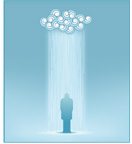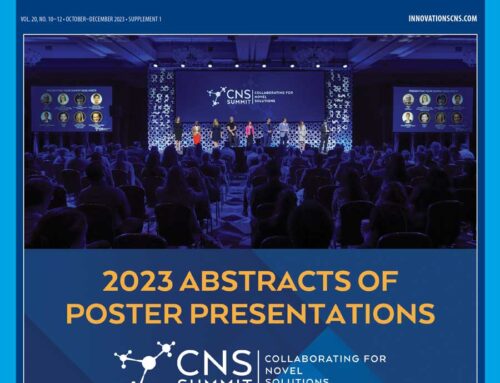 by Jennifer M. Giddens and David V. Sheehan, MD, MBA
by Jennifer M. Giddens and David V. Sheehan, MD, MBA
J. Giddens is Co-founder of the Tampa Center for Research on Suicidality, Tampa, Florida; and Dr. Sheehan is Distinguished University Health Professor Emeritus, University of South Florida College of Medicine, Tampa, Florida.
Innov Clin Neurosci. 2014;11(9–10):179–180
Funding: There was no funding for the development and writing of this article.
Financial Disclosures: J. Giddens is the author and copyright holder of the Suicide Plan Tracking Scale (SPTS) and is a named consultant on the Sheehan-Suicidality Tracking Scale (S-STS), the Sheehan-Suicidality Tracking Scale Clinically Meaningful Change Measure Version (S-STS CMCM), the Pediatric versions of the S-STS, and the Suicidality Modifiers Scale; Dr. D. Sheehan is the author and copyright holder of the S-STS, the S-STS CMCM, the Pediatric versions of the S-STS, the Sheehan Disability Scale (SDS), and the Suicidality Modifiers Scale, is a co-author of the SPTS, and owns stock in Medical Outcomes Systems, which has computerized the S-STS.
Key Words: Suicide, suicide assessment, suicidality, suicide event count, global assessment of suicidality, time spent, patient-rated suicide assessment
Abstract: Objective: Regulatory agencies and suicidality scales have focused on the value of a count of suicidal ideation and behavior events, even though the clinical usefulness and predictive value of the count of events in the global assessment of suicidality is unclear. This case study explores the value of this event count and offers a more sensitive alternative to tracking the count of events. Methods: One subject documented her suicidality daily for 366 days. This documentation included the global severity of suicidality, the count of suicidal events, and the time spent experiencing those events. The relationship between both the count of events and the time spent were each compared to the global severity rating. Results: We found the relationship between the time spent experiencing suicidality and the global severity of suicidality was much stronger than the relationship between the count of suicidal events and global severity. Conclusion: This case study suggests that tracking the time a patient spends experiencing suicidality may be more clinically useful and may have more value in assessing global severity of suicidality than tracking the count of events of suicidal ideation and behavior.
Introduction
Regulatory agencies and suicidality assessment scales value counting suicidal events.[1] The clinical usefulness and predictive value of the count of events is unclear. This case study explores the value of the event count and another alternative.
Methods
A 30-year-old female subject diagnosed with Asperger syndrome and with chronic suicidality collected daily data on her suicidality over 366 sequential days. These data included the global severity of suicidality, the count of suicidal events, the time spent experiencing each event, and the coding category for each event, as outlined in Appendix A of the United States Food and Drug Administration (FDA) 2012 draft guidance on the prospective assessment of suicidal ideation and behavior, henceforth referred to as the FDA-Classification Algorithm of Suicide Assessment 2012 or FDA-CASA 2012.[1] The subject directly entered these data into a spreadsheet every morning for the prior day (12:00 am–11:59 pm) resulting in a total of 31,183 suicidal events across this year of data collection. Suicidality was defined as any phenomenon captured by the first page of the 11/12/13 version of the Sheehan-Suicidality Tracking Scale (S-STS) (except non-suicidal self-injury).[2] The global severity of suicidality was rated using a 0 to 4 (5-point Likert) scale, with the following descriptive anchors: 0=not at all; 1=mild; 2=moderate; 3=severe; 4=extreme.
Results
We investigated the relationship between the daily global severity of suicidality on the one side and either the count of suicidal events daily or the time spent experiencing suicidality daily on the other side. The former relationship was very weak with an R2 of 0.0314 while the latter relationship was much stronger with an R2 of 0.6209.
The correlation coefficient between global severity of suicidality score and the count of suicidal events was not significant (0.17). The correlation coefficient between the count of events and the time spent in suicidality was not significant either (0.14). However, the correlation coefficient between global severity of suicidality score and the time spent was strong (0.68).
To further investigate the relationships between the global severity of suicidality, suicidal event count, and the time spent in suicidality, we located dates in the dataset that had the same suicidal event count. For example, Days 4 and 43 each had 55 suicidal events. On Day 4, the global severity score was 4 (extreme) and the time spent in suicidality was 481 minutes. On Day 43, the global severity score was 1 (mild) and the time spent in suicidality was just over than 18 minutes. This example illustrates the lack of reliability of the event count as an index of global severity of suicidality. It also illustrates the value of time spent as a reflection of global severity of suicidality. There were other similar examples in the dataset.
The data was sorted by FDA-CASA 2012 classification category to determine if the type of suicidal event impacted the results. To further investigate the relationships between the global severity of suicidality, suicidal event count, and the time spent in suicidality, we located as many dates in the dataset that had the same suicidal event count by each type of suicidal phenomenon. For example, Days 273 and 366, each had four passive suicidal ideation events and were compared for time spent and global severity. On Day 273, the global severity score was 2 (moderate) and the time spent was 80 minutes. On Day 366, the global severity score was 1 (mild) and the time spent was less than one minute.
For Days 25 and 79, each day had five non-specific active suicidal ideation events and were compared for time spent and global severity. On Day 25, the global severity was 3 (severe) and the time spent was 300 minutes. On Day 79, the global severity score was 1 (mild) and the time spent was five minutes.
Days 100 and 219 each had two events of “active suicidal ideation: method, intent, and plan” and were compared for time spent and global severity. On Day 100, the global severity was 4 (extreme) and the time spent was 240 minutes. On Day 219, the global severity score was 2 (moderate) and the time spent was two minutes.
These examples illustrate the lack of reliability of event count as an index of global severity of suicidality and the value of time spent as a reflection of global severity of suicidality in all the above types of suicidal events that had data to permit this comparison. There were not enough events of the other FDA-CASA 2012 categories for similar comparisons.
Discussion
Although the same number of events occurred on Days 4 and 43, Day 43 had 55 shorter periods of suicidality, which resulted in a lower global severity score, while Day 4 had 54 shorter periods of suicidality and one longer period of suicidal ideation.
On some of the days (not highlighted in the results), the subject documented the same count of events and global severity scores, but different time spent values. Day 8 contained a brief period of intense suicidality while Day 325 contained a longer period of more moderate suicidality. The compound effect of the subject’s ability to cope and the intensity and time spent in suicidality on these days resulted in the same global severity score of 2. This compound effect is not represented in the count of suicidal events, but is reflected in the time spent in suicidality.
Relying on the count of events within the FDA-CASA 2012 categories studied is not as reliable a guide to the global severity of suicidality as the time spent experiencing suicidality in this dataset. The findings in this case study suggest the time spent experiencing suicidality is a much stronger reflection of global suicidality severity than the count of events. The clinical value of this finding is that clinicians may get a better reflection of the global severity of suicidality by asking the questions, “How much time do you usually spend per day with any suicidal impulses, thoughts, or actions?” and “Were there some days when you spent more than this amount of time?” The research application of this finding is that time spent may be a useful outcome measure in studies investigating treatment-emergent suicidality and in detecting the treatment effects of future anti-suicidal medications. These questions are included in the S-STS. Further investigation of this concept with larger samples and in different settings is needed before we can state that this finding is generalizable, reliable, and useful.
Limitations. The use of only one subject for this case study means these findings may not be generalizable to other cases of suicidality. The subject tracked the global severity of her suicidality prior to tracking any other daily data. This differs from the custom of rating global severity of a condition after rating the detailed phenomena of the condition, and this may have impacted the results.
Conclusion
This case study suggests that tracking the time a patient spends experiencing suicidality may be more clinically useful and may have more value than tracking the count of events of suicidality in assessing global severity of suicidality.
References
1. United States Food and Drug Administration, United States Department of Health and Human Services. Guidance for Industry: Suicidality: Prospective Assessment of Occurrence in Clinical Trials, Draft Guidance. August 2012. Revision 1. http://www.fda.gov/downloads/Drugs/Guidances/UCM225130.pdf. Accessed October 1, 2014.
2. Sheehan DV, Giddens JG, Sheehan IS. Status update of the Sheehan-Suicidality Tracking Scale (S-STS) 2014. Innov Clin Neurosci. 2014;11(9–10):93–140.





